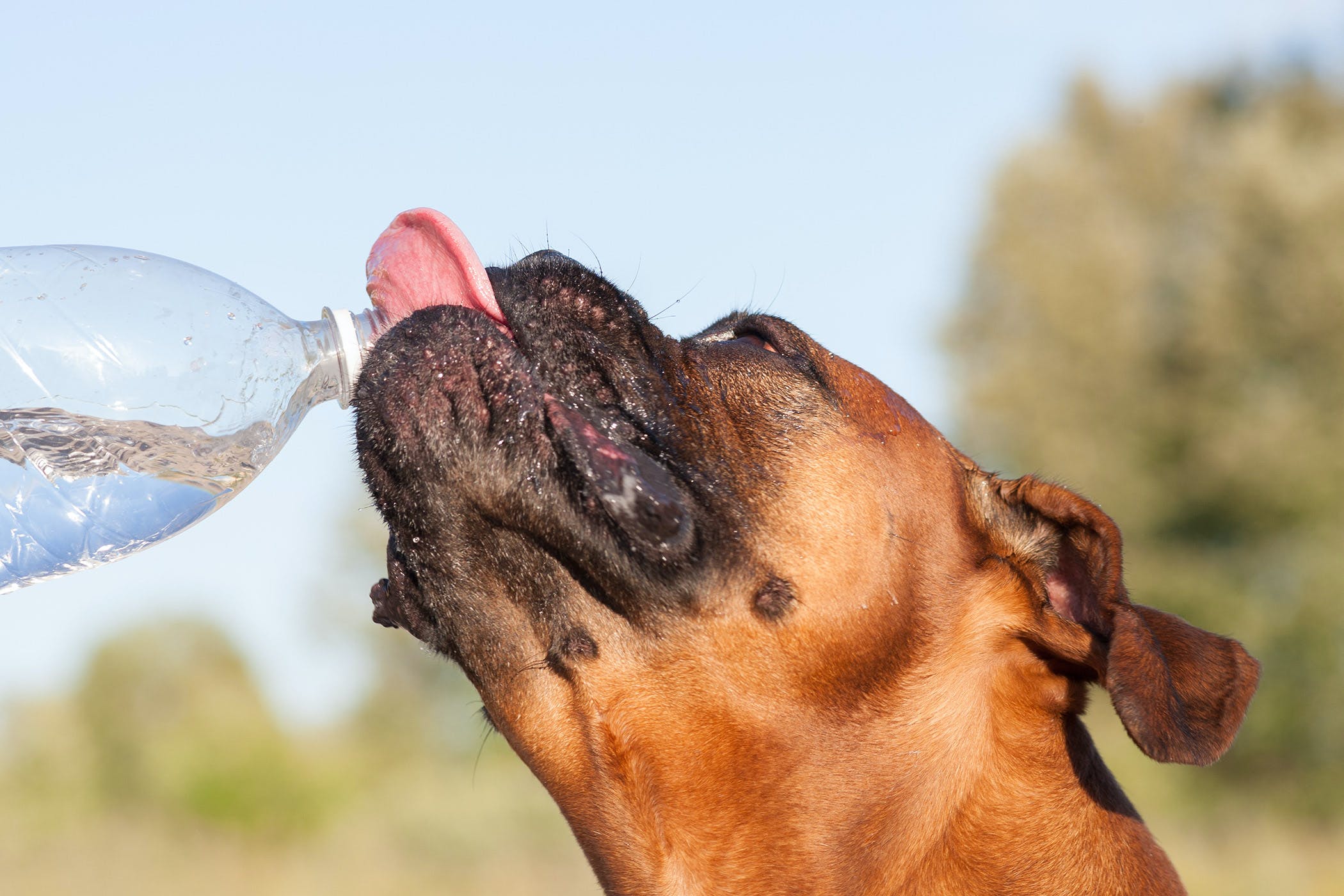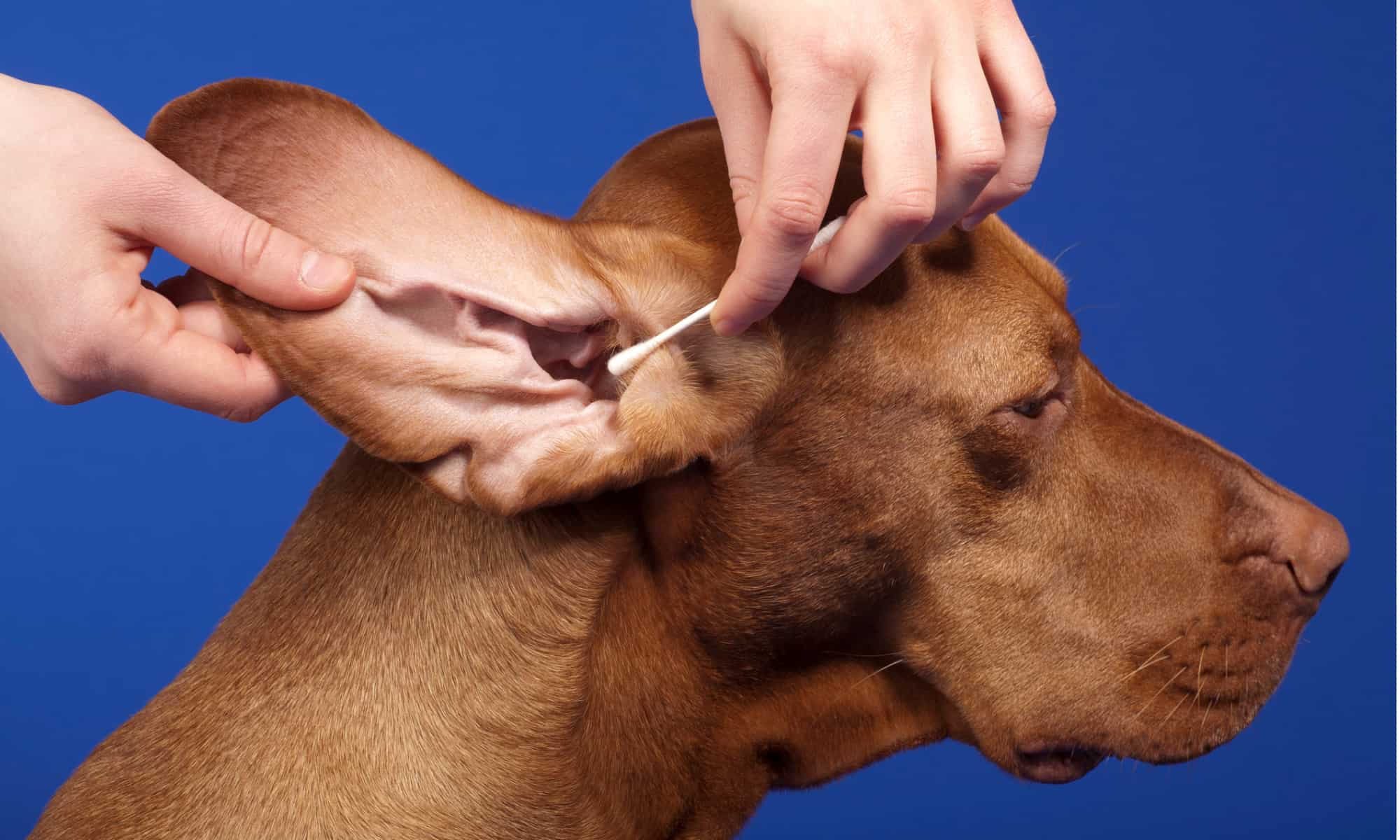Home>Health & Wellness>Common Health Issues>Why Do Dogs With Diabetes Get Cataracts


Common Health Issues
Why Do Dogs With Diabetes Get Cataracts
Published: January 30, 2024
Learn about common health issues in dogs, including why dogs with diabetes are prone to developing cataracts. Understand the connection and how to manage their health effectively.
(Many of the links in this article redirect to a specific reviewed product. Your purchase of these products through affiliate links helps to generate commission for Pawsomeoldies.com, at no extra cost. Learn more)
Table of Contents
Introduction
Diabetes is a common health issue that affects not only humans but also our beloved canine companions. When a dog is diagnosed with diabetes, it can lead to various complications, one of which is the development of cataracts. Understanding the relationship between diabetes and cataracts in dogs is crucial for pet owners to provide the best care for their furry friends.
Cataracts, a condition characterized by the clouding of the eye's lens, can significantly impact a dog's vision and overall quality of life. Just like in humans, diabetic dogs are prone to developing cataracts at a higher rate than non-diabetic dogs. This connection between diabetes and cataracts underscores the importance of proactive management and preventive measures to safeguard a diabetic dog's ocular health.
In this article, we will delve into the intricate relationship between diabetes and cataracts in dogs. We will explore the risk factors, symptoms, diagnosis, treatment, and preventive strategies related to cataracts in diabetic dogs. By gaining a comprehensive understanding of these aspects, pet owners can take proactive steps to support their diabetic dogs and mitigate the risk of cataract development.
Understanding the impact of diabetes on a dog's ocular health is essential for providing holistic care. Through this exploration, we aim to equip pet owners with valuable insights and practical knowledge to navigate the complexities of managing diabetes and mitigating the associated risks, such as cataracts, in their canine companions.
Read more: Why Do Dogs With Diabetes Pee In The House
Understanding Diabetes in Dogs
Diabetes mellitus, commonly referred to as diabetes, is a metabolic disorder that affects dogs in a manner similar to its impact on humans. In dogs, diabetes occurs when the pancreas fails to produce enough insulin or when the body becomes resistant to the insulin produced. Insulin plays a crucial role in regulating blood sugar levels, facilitating the uptake of glucose by cells for energy production. When this process is disrupted, it leads to elevated blood sugar levels, a hallmark of diabetes.
There are two primary types of diabetes that can affect dogs: Type 1 and Type 2. Type 1 diabetes, also known as insulin-dependent diabetes, occurs when the pancreas fails to produce sufficient insulin. This type is more commonly diagnosed in dogs and requires lifelong insulin therapy for management. On the other hand, Type 2 diabetes, also known as non-insulin-dependent diabetes, involves insulin resistance, where the body's cells do not respond effectively to insulin. This type is less common in dogs but can still occur, particularly in older and overweight canines.
The prevalence of diabetes in dogs has been on the rise, mirroring the trend observed in humans. Factors such as genetics, obesity, and a sedentary lifestyle can contribute to the development of diabetes in dogs. Certain breeds, including but not limited to Poodles, Dachshunds, and Beagles, have shown a higher predisposition to diabetes, indicating a potential genetic influence.
Recognizing the symptoms of diabetes in dogs is crucial for early detection and intervention. Common signs of diabetes in dogs include increased thirst and urination, sudden weight loss despite a hearty appetite, lethargy, and recurrent urinary tract infections. If left untreated, diabetes can lead to severe complications, including cataracts, which can profoundly impact a dog's vision and overall well-being.
Understanding diabetes in dogs involves not only recognizing its symptoms but also embracing a proactive approach to management. This may encompass dietary modifications, regular exercise, and, in cases of Type 1 diabetes, insulin administration as prescribed by a veterinarian. By comprehending the intricacies of diabetes and its potential implications, pet owners can play a pivotal role in supporting their diabetic dogs and mitigating the associated risks, such as cataract development.
The Link Between Diabetes and Cataracts in Dogs
The link between diabetes and cataracts in dogs is a significant concern for pet owners and veterinarians alike. Cataracts, characterized by the clouding of the eye's lens, are a common complication associated with diabetes in dogs. Understanding the underlying mechanisms that connect diabetes and cataracts is crucial for comprehending the heightened risk faced by diabetic dogs and implementing proactive measures to safeguard their ocular health.
In diabetic dogs, the elevated levels of glucose in the bloodstream can lead to a process known as glycosylation. This process occurs when excess glucose molecules bind to proteins within the lens of the eye, causing structural changes that result in the clouding of the lens. As a result, the lens becomes opaque, obstructing the passage of light and impairing vision. This glycosylation-induced clouding of the lens is a hallmark characteristic of cataracts in diabetic dogs.
Moreover, the duration of diabetes plays a pivotal role in the development of cataracts. Over time, the sustained elevation of blood sugar levels can exacerbate the glycosylation process, leading to the progressive formation and maturation of cataracts. As such, diabetic dogs are at a heightened risk of developing cataracts as the duration of their diabetes increases.
The impact of cataracts on a diabetic dog's vision and overall well-being cannot be overstated. Cataracts can cause varying degrees of vision impairment, ranging from mild blurriness to complete blindness. This not only diminishes a dog's quality of life but also poses additional challenges in managing their diabetes and overall health.
Recognizing the intricate link between diabetes and cataracts underscores the importance of proactive management and preventive strategies. By diligently managing a diabetic dog's blood sugar levels through prescribed insulin therapy, dietary control, and regular veterinary monitoring, pet owners can mitigate the risk of cataract development. Additionally, routine eye examinations by a veterinarian can aid in early detection of cataracts, enabling timely intervention to preserve a dog's visual acuity.
In essence, the link between diabetes and cataracts in dogs underscores the need for comprehensive care that addresses both the systemic implications of diabetes and the ocular complications it can precipitate. By understanding this connection and taking proactive measures, pet owners can play a pivotal role in supporting their diabetic dogs and safeguarding their ocular health.
Risk Factors for Cataracts in Diabetic Dogs
Several factors contribute to the heightened risk of cataract development in diabetic dogs. Understanding these risk factors is crucial for pet owners and veterinarians to proactively address and mitigate the potential onset of cataracts in diabetic canine companions.
-
Duration of Diabetes: The duration of diabetes significantly influences the likelihood of cataract development in diabetic dogs. Prolonged exposure to elevated blood sugar levels can exacerbate the glycosylation process within the lens of the eye, leading to the progressive formation and maturation of cataracts. As such, dogs with long-standing diabetes are at a heightened risk of developing cataracts.
-
Blood Sugar Control: Inadequate control of blood sugar levels in diabetic dogs can substantially increase the risk of cataract formation. Fluctuating or persistently high blood glucose levels contribute to the glycosylation process, promoting the clouding of the lens and the development of cataracts. Conversely, diligent management of blood sugar levels through prescribed insulin therapy, dietary control, and regular veterinary monitoring can help mitigate this risk.
-
Breed Predisposition: Certain dog breeds exhibit a higher predisposition to both diabetes and cataracts. Breeds such as Poodles, Dachshunds, and Beagles are among those with an increased susceptibility to diabetes, which consequently elevates their risk of developing cataracts. Recognizing breed-specific predispositions can prompt proactive measures, including regular ocular examinations, to monitor and address potential cataract development in diabetic dogs.
-
Age: Advanced age is a significant risk factor for cataract development in diabetic dogs. As dogs age, the cumulative effects of prolonged diabetes and the associated glycosylation process can heighten the likelihood of cataract formation. Additionally, age-related changes in the lens structure can further exacerbate the impact of diabetes on cataract development.
-
Genetic Influences: Genetic factors play a role in predisposing certain dogs to diabetes and subsequent cataract formation. Understanding the genetic predispositions of specific breeds and individual dogs can aid in early identification of potential risks, prompting proactive measures to mitigate the impact of diabetes on ocular health.
By comprehensively understanding the risk factors associated with cataract development in diabetic dogs, pet owners and veterinarians can implement targeted strategies to mitigate these risks. Proactive management of diabetes, regular ocular examinations, and diligent control of blood sugar levels are pivotal in safeguarding the ocular health of diabetic dogs and minimizing the potential impact of cataracts on their vision and overall well-being.
Symptoms and Diagnosis of Cataracts in Dogs with Diabetes
Cataracts in dogs with diabetes manifest through various symptoms that necessitate prompt attention from pet owners and veterinary professionals. Understanding these symptoms and the diagnostic process is crucial for early intervention and effective management of cataracts in diabetic dogs.
Read more: Why Do Dogs With Diabetes Lose Weight
Symptoms of Cataracts in Dogs with Diabetes
-
Cloudy or Blurry Vision: Diabetic dogs with cataracts often exhibit signs of visual impairment, such as cloudy or blurry vision. Pet owners may notice a visible opacity or cloudiness in their dog's eyes, indicative of cataract formation.
-
Increased Eye Discharge: Cataracts can lead to increased eye discharge in diabetic dogs, often accompanied by redness or irritation. The presence of abnormal eye discharge warrants a thorough ocular examination by a veterinarian.
-
Changes in Eye Color: As cataracts progress, diabetic dogs may experience changes in the color of their eyes, particularly in the affected eye. This can manifest as a noticeable shift in the eye's hue or a visible alteration in the appearance of the pupil.
-
Behavioral Changes: Dogs with cataracts may exhibit behavioral changes related to their visual impairment. This can include reluctance to engage in activities that require visual acuity, such as playing fetch or navigating unfamiliar environments.
Diagnosis of Cataracts in Dogs with Diabetes
Diagnosing cataracts in diabetic dogs involves a comprehensive ocular examination conducted by a veterinarian. The diagnostic process may include the following steps:
-
Physical Examination: A thorough physical examination of the dog, including an assessment of overall health and any observable ocular abnormalities, forms the initial stage of the diagnostic process.
-
Ocular Evaluation: A detailed examination of the eyes, including visual inspection and assessment of the lens, is essential for detecting the presence and extent of cataracts. This may involve the use of specialized ophthalmic instruments and techniques to evaluate the clarity and integrity of the lens.
-
Visual Response Testing: Assessing a diabetic dog's visual responses can provide valuable insights into the impact of cataracts on their vision. This may involve observing the dog's reactions to visual stimuli and evaluating their ability to navigate obstacles or track moving objects.
-
Diagnostic Tests: In some cases, additional diagnostic tests, such as ocular ultrasound or electroretinography, may be employed to further evaluate the extent of cataract formation and assess the overall ocular health of the diabetic dog.
Early diagnosis of cataracts in diabetic dogs is pivotal for initiating timely interventions and implementing a tailored management plan. By recognizing the symptoms and engaging in proactive ocular examinations, pet owners can collaborate with veterinarians to safeguard their diabetic dogs' visual acuity and overall ocular health.
Treatment and Management of Cataracts in Diabetic Dogs
The treatment and management of cataracts in diabetic dogs present unique challenges that necessitate a comprehensive approach to preserve ocular health and maintain a high quality of life for affected canine companions. While cataract surgery is a common and effective intervention for non-diabetic dogs, the presence of diabetes adds complexity to the treatment process. The heightened risk of complications, such as diabetic retinopathy and delayed wound healing, requires careful consideration and specialized management strategies.
Surgical Intervention
Cataract surgery in diabetic dogs requires meticulous pre-operative evaluation and preparation to mitigate the potential risks associated with diabetes. Prior to surgery, thorough assessment of the dog's overall health, blood sugar control, and ocular condition is essential. Collaborative efforts between the veterinary ophthalmologist and the dog's primary care veterinarian are pivotal in optimizing the dog's readiness for surgery.
During the surgical procedure, the clouded lens is removed and replaced with an artificial intraocular lens (IOL) to restore vision. In diabetic dogs, close monitoring of blood sugar levels before, during, and after surgery is imperative to minimize the risk of post-operative complications. Additionally, post-operative care may involve tailored medication regimens and vigilant monitoring to ensure optimal healing and visual recovery.
Read more: Why Do Dogs With Diabetes Go Blind?
Ongoing Diabetes Management
Effective management of diabetes is integral to the post-operative care of diabetic dogs undergoing cataract surgery. Maintaining strict blood sugar control through insulin therapy, dietary management, and regular veterinary monitoring is crucial to support the dog's overall well-being and promote successful surgical outcomes. Close collaboration between the dog's primary care veterinarian and the veterinary ophthalmologist is essential to synchronize diabetes management with post-operative care.
Visual Rehabilitation
Following cataract surgery, diabetic dogs may require visual rehabilitation to adapt to their restored vision. This may involve gradual acclimatization to visual stimuli, environmental modifications to enhance safety and comfort, and patient guidance from pet owners to facilitate the dog's adjustment to improved vision. The collaborative involvement of pet owners in the dog's visual rehabilitation process is instrumental in promoting a smooth transition to enhanced visual acuity.
Ongoing Monitoring and Support
Long-term monitoring and support are essential components of the comprehensive management of cataracts in diabetic dogs. Regular ocular examinations, blood sugar monitoring, and veterinary consultations are pivotal in detecting and addressing potential complications, such as post-operative inflammation or changes in visual acuity. Additionally, ongoing support from pet owners, including adherence to prescribed medication regimens and proactive communication with veterinary professionals, plays a vital role in sustaining the dog's ocular health and overall well-being.
In essence, the treatment and management of cataracts in diabetic dogs demand a multidisciplinary approach that integrates specialized ophthalmic care with meticulous diabetes management. By navigating the complexities of surgical intervention, post-operative care, visual rehabilitation, and ongoing support, pet owners and veterinary professionals can collaborate to optimize the ocular health and quality of life of diabetic dogs affected by cataracts.
Preventing Cataracts in Dogs with Diabetes
Preventing cataracts in dogs with diabetes encompasses a proactive and multifaceted approach aimed at mitigating the risk of cataract development and preserving ocular health. While diabetic dogs are inherently predisposed to cataracts due to the complex interplay between diabetes and ocular complications, implementing preventive strategies can significantly influence the trajectory of their ocular well-being.
Read more: Why Do People Get Dog Allergies
Optimal Diabetes Management
Effective management of diabetes forms the cornerstone of cataract prevention in diabetic dogs. Maintaining strict blood sugar control through prescribed insulin therapy, dietary management, and regular veterinary monitoring is pivotal in minimizing the glycosylation process that contributes to cataract formation. Consistent adherence to the recommended diabetes management regimen, coupled with proactive communication with veterinary professionals, can help mitigate the impact of diabetes on ocular health.
Nutritional Support
Dietary considerations play a crucial role in supporting the overall health of diabetic dogs and potentially influencing cataract development. Providing a balanced and nutritionally appropriate diet, tailored to the dog's specific needs and diabetes management requirements, can contribute to overall well-being and potentially mitigate the risk of ocular complications. Consultation with a veterinarian to formulate a dietary plan that aligns with the dog's diabetes management and overall health goals is essential in supporting preventive measures.
Regular Ocular Examinations
Routine ocular examinations by a qualified veterinarian are instrumental in early detection and intervention for potential ocular complications, including cataracts. Proactive monitoring of the dog's ocular health, coupled with comprehensive assessments of the lens and overall eye structure, can aid in identifying subtle changes indicative of cataract development. Early detection enables timely intervention and management strategies to mitigate the progression of cataracts and preserve the dog's visual acuity.
Environmental Considerations
Creating a supportive and safe environment for diabetic dogs can contribute to their overall well-being and potentially influence ocular health. Environmental modifications, such as minimizing exposure to potential ocular irritants and ensuring adequate lighting for enhanced visibility, can play a role in reducing potential stressors on the dog's eyes. Additionally, proactive measures to prevent ocular trauma or injury, such as avoiding hazardous objects or surfaces, can contribute to ocular health preservation.
Read more: Why Can’t A Dog With Diabetes Eat And Vomit?
Collaborative Care
Collaboration between pet owners and veterinary professionals is pivotal in implementing preventive measures and sustaining the ocular health of diabetic dogs. Open communication, adherence to prescribed management regimens, and proactive engagement in the dog's overall care are essential components of a collaborative approach. By working in tandem with veterinary professionals, pet owners can gain valuable insights and guidance to support their diabetic dogs' ocular health and potentially mitigate the risk of cataract development.
In essence, preventing cataracts in dogs with diabetes necessitates a proactive and collaborative approach that encompasses optimal diabetes management, nutritional support, regular ocular examinations, environmental considerations, and collaborative care. By integrating these preventive strategies into the holistic care of diabetic dogs, pet owners and veterinary professionals can strive to safeguard ocular health and enhance the overall well-being of their canine companions.
Conclusion
In conclusion, the intricate relationship between diabetes and cataracts in dogs underscores the multifaceted nature of managing these interconnected health concerns. Diabetic dogs face a heightened risk of developing cataracts due to the glycosylation process induced by elevated blood sugar levels, emphasizing the importance of proactive diabetes management and ocular health preservation. Understanding the risk factors, symptoms, diagnosis, treatment, and preventive strategies related to cataracts in diabetic dogs is pivotal for pet owners and veterinary professionals alike.
The prevention and management of cataracts in diabetic dogs demand a comprehensive and collaborative approach that integrates specialized ophthalmic care with meticulous diabetes management. By navigating the complexities of surgical intervention, post-operative care, visual rehabilitation, and ongoing support, pet owners and veterinary professionals can collaborate to optimize the ocular health and quality of life of diabetic dogs affected by cataracts.
Furthermore, preventive measures, including optimal diabetes management, nutritional support, regular ocular examinations, environmental considerations, and collaborative care, play a pivotal role in mitigating the risk of cataract development in diabetic dogs. By integrating these preventive strategies into the holistic care of diabetic dogs, pet owners and veterinary professionals can strive to safeguard ocular health and enhance the overall well-being of their canine companions.
In essence, the comprehensive understanding of the link between diabetes and cataracts in dogs empowers pet owners to proactively support their diabetic dogs and mitigate the associated risks. By embracing a proactive and collaborative approach, pet owners and veterinary professionals can navigate the complexities of managing diabetes and cataracts in dogs, ultimately fostering the ocular health and overall well-being of their beloved canine companions.











